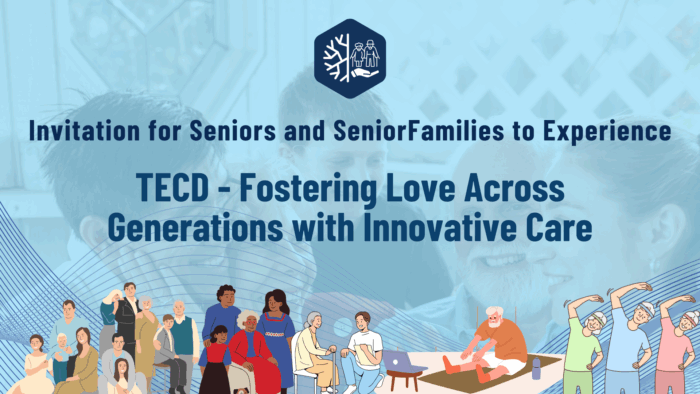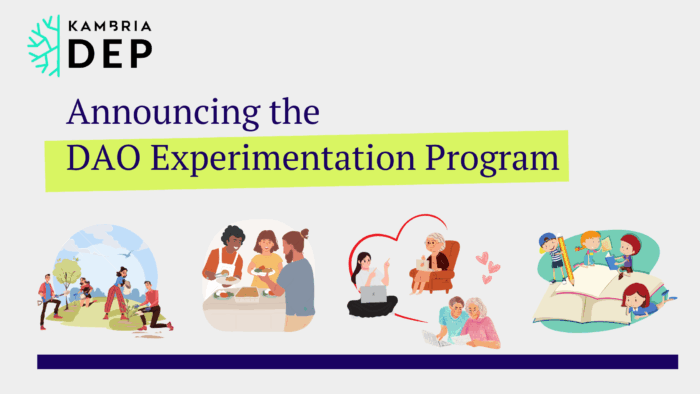KAMBRIA - On July 28, 2023, Kambria hosted the Ocean Cleanup Robot DAO Launch Event, a significant moment in technology innovation. This event focused on innovative solutions using autonomous robots to combat water pollution, especially plastic pollution. Developer teams presented their ideas, aligning with Kambria's commitment to environmental sustainability. The event also marked the start of official DAO fundraising and kept the tech community updated on Kambria's upcoming milestones.

Table of Contents
- - - - - 🔹 - - - - -
1️⃣ Introduction
We would like to share the biographies of the Ocean Cleanup Robot DAO Judges Committee and two Developer Teams:
For the Judges Committee, we have 4 Experts that join the Launch Event
2 Technical Experts
- Mr. Rathishchandra Gatti is a Professor and the head of the Department of Mechanical Engineering and Robotics and Automation. His background is in various engineering roles, including as an IP Analyst, NPI Program Manager, and Production and Design Engineer.
- Mr. Hai Dang, a seasoned Software Engineering Director with 18+ years of experience in leading technical operations and product development. He leads the OhmniLabs's software division, focusing on Ohmni Telepresence robots, OhmniClean robots, and OhmniCloud, a cloud-based robotics platform.
Industry Expert
- Mr. Sovann Nou, Founder and Executive Director of River Ocean Cleanup, a Cambodian NGO battling river and ocean plastic pollution. In March 2022, they partnered for a major cleanup with a German social enterprise using AI-equipped river garbage boats.
Business Expert
- Mr. Andrei Popescu, CEO of SCX Holdings, advises and invests in FinTech, DeFi, and Blockchain startups. His track record in diverse countries and dynamic environments has contributed to business growth and innovation success.
For 2 Developer Teams
- The first team is Roshark Marine, a team from the University of Telkom, focuses on marine robotics research and competitions. As time went by and the increasing demand for the implementation of robotics in real life, this company was born. They specialized in marine robot technology, providing underwater robot systems, services, and components.
- The second team, Infinos Tech, is a startup known for crafting eco-friendly, sustainable, and functional products with an eco-conscious approach. Their goal is to develop products that can help to reduce waste and pollution, while also improving people's lives.
2️⃣ Dev Teams’ Proposal Presentations and Judges’ feedback or questions
Kambria would like to share two Dev Teams' Proposed Solutions, Judges' feedback, and Teams' responses from the event.
The 1st turn is Roshark Marine Team
Roshark Team’s Presentation
From the beginning, Ryan from Roshark Marine introduced the "Guardian of Ocean Cleanup," an innovative underwater surveyor for ecosystem protection. He discussed marine pollution's impacts, emphasizing biodiversity protection, climate change mitigation, and economic importance.
Additionally, the "Guardian of Ocean Cleanup" solution utilizes advanced AI and machine learning to monitor marine protected areas. It aims to measure biodiversity, water pollution, and map marine debris, promising comprehensive conservation efforts. The 13-month development plan, with a budget of $109,000, demonstrated thorough preparation.
Ryan's presentation highlighted their precision-focused progress in underwater detection using YOLO Deep Learning Network and ROS data processing. Their experience and achievements in underwater robotics further established their credibility and expertise.
So, the "Guardian of Ocean Cleanup" is a promising initiative by a passionate team, offering tech solutions for ocean conservation.
Judges’ feedback/questions & Team’s responses
Here is a summary of the Judges, Roshark Team, and participants' discussions:
Mr. Rathishchandra:
- The first question addressed mechanical uniqueness and the crucial stabilization mechanism for UAVs.
- The second point of interest is related to the electronics hardware of the UAV.
- The third topic discusses AI classification and determining hyperparameters for the UAV's AI system.
Roshark:
- The ROV boasts a simple, modular design for portability and efficient part replacement when necessary, highlighting its mechanical advantages.
- The team designed the electronics components to be modular, ensuring straightforward replacement of damaged parts.
- In terms of software, the robot leverages machine learning, particularly YOLOv3 Tiny, for analyzing underwater data and classifying objects. The team chose YOLOv3 Tiny because of its lightweight nature, explaining the selection for the ROV's small computing device.
- Besides that, the current classification capabilities include three classes of objects: plastics, ROV, and living creatures.
Mr. Rathishchandra:
- The questions are related to the technical aspects of the project.
- Regarding classification, the concern is about classifying debris and marine life in an opaque underwater environment.
- There may be challenges in obtaining clear classifiers due to the environment, leading to potential false positives.
- The question concerns the techniques used to classify images in such conditions.
Roshark:
- They are using a specific underwater camera designed for underwater purposes, not a basic camera available in the market.
- The camera is suitable for working in the underwater environment, even at depths between 10 to 50 meters.
- Image collaborations enhance classification, potentially involving image datasets to refine AI algorithms and improve accuracy in the classification process.
Mr. Rathishchandra:
- How to reduce the false positives?
Roshark:
- The current model occasionally generates false positives, particularly when identifying humans, labeling them as other living creatures like fish.
- This misclassification highlights the need for improvement in the model's accuracy and performance.
- Enhancing the model is crucial to prevent misidentifications and improve its accuracy in distinguishing various types of living creatures correctly.
Mr. Rathishchandra:
- So what is your plan for training? How many datasets are you trying to use?
Roshark:
- Currently, the project is utilizing an available dataset sourced from the Internet.
- The future plan involves developing a custom dataset tailored to the project's requirements to enhance the model's performance.
- The Team aims to enhance the model by incorporating additional algorithms beyond CNNs (Convolutional Neural Networks).
- The team is considering exploring GCNs (Graph Convolutional Networks) as an alternative machine learning approach.
- The focus is on continuously improving the model and incorporating diverse techniques to achieve better results for the project's objectives.
Mr. Rathishchandra:
- They are considering sensor fusion to improve the system, recognizing that depending solely on LiDAR may have limitations.
- He is also asking if LiDAR is currently part of the system.
- The team might explore LiFi technology, a promising option for underwater applications due to its novelty and potential.
Roshark:
- The current setup primarily uses RADAR, not LiDAR, as the main sensor.
- To maintain depth, the team is utilizing a depth sensor, and for detections, they are using a camera.
- Future plans involve incorporating another type of sensor, such as an echo sounder, to complement the existing sensors.
- The team is open to exploring various sensor options to further improve the system's capabilities and performance.
Mr. Rathishchandra:
- He is inquiring about how buoyancy stability is achieved in the context of thrusting.
- They're also asking whether the system or project utilizes additional components.
Roshark:
- The system relies on a controller to achieve neutral buoyancy for the robots.
- A depth sensor helps the controller maintain the robot's specific depth in the water.
- The controller is responsible for controlling the motor to maintain the desired depth.
- There is no specific buoyant or metro buoyant being used in the system.
Mr. Rathishchandra:
- The first part of the query seeks clarity on the system's intended depth range for operation.
- The second part inquires if they have conducted a survey on the depth capabilities of competitive AUVs.
Roshark:
- There are two types of systems: Marlin and CoralMind.
- Marlin can dive to a depth of 300 meters, while CoralMind is designed for depths up to 50 meters.
- Another type of small aerob level can typically dive to around 100 meters.
- The emphasis is on using AI for ocean cleanup and conservation purposes.
Mr. Hai:
- The first question is about the robot's underwater endurance and power supply. The team addressed queries about the ROV's underwater autonomy and power management, considering its compact design.
- The second question pertains to contingency plans in case of malfunctions or loss of control during underwater operations. They were questioned about their protocols for handling such situations and retrieving the ROV if necessary.
- The third question focuses on the current technical challenges and explorations related to the product. The team was asked to pinpoint the toughest technical challenge and outline their strategy for tackling anticipated development obstacles.
Roshark:
- The robot's MVP product can stay underwater for up to 3 hours, significantly longer than human divers.
- The robot can customize its battery capacity to extend underwater operation if needed, accommodating various mission durations.
- The ROV incorporates an emergency surfacing system for handling unexpected situations and malfunctions, ensuring operational safety.
- Technical challenges include water management in the mechanical design, while penetrating the small underwater market presents business challenges.
Mr. Hai:
- The robot's three-hour underwater capability suffices, with potential monitoring requirements during operations.
Mr. Sovann:
- The first question is whether there are similar devices already available in the market.
- The second question pertains to the robot's ability to function effectively in challenging environments with murky waters and obstacles.
- The third question pertains to the practicality and applicability of the collected data to institutions.
Roshark:
- The robot's unique purpose is ocean conservation, especially in coral reefs, using AI for precise data collection.
- Unlike other ROVs, this system specializes in ocean conservation, providing a safer, more efficient alternative to human divers.
- The team is developing a specialized thruster to make the robot suitable for cleaning heavily polluted rivers.
- In addition, the Team has effectively deployed the robot in collaborations with the government for coral reef restoration and underwater device monitoring.
Ms. Lien:
- The question revolves around the need for a separate product for river waste collection or integrating it as a module into the existing robot. It aims to clarify the system's standalone capabilities and integration requirements.
Roshark:
- They designed the robot as a complementary product to assist with ocean cleanup.
- The robot's primary function is to detect and provide information about debris in the water.
- Another device is necessary to directly remove the debris from the water.
- The robot can easily connect with other robots, such as a boot removal robot, to enhance its capabilities. Its main role is to gather data, provide accurate detection and information, rather than physically collecting debris.
- The proposed solution's independence or dependency may vary based on the situation or specific use case.
- In certain situations, it may function independently and autonomously, capable of operating on its own.
Ms. Lien:
- The question is about the main function of the solution, particularly the AI module.
Roshark:
The Team attached examples for the answers.
- The AI solution can count the number of sea turtles coming to land in conservation areas like sea turtle conservation sites, providing valuable data for the government.
- In coral reef restoration areas, AI can measure the success of restoration efforts without requiring divers to collect data manually.
- The main functions of the AI solution are data counting for sea turtle conservation and assessing coral reef restoration success, contributing to environmental monitoring and conservation efforts.
Ms. Lien:
- The concern arises regarding the solution's reliance on other products or solutions to fulfill its intended function.
- The question is whether the tool can operate independently or if it requires integration with other products or solutions. We seek clarification regarding the tool's level of autonomy and self-sufficiency in carrying out its functions.
Roshark:
- The robot possesses autonomous data collection capabilities and has undergone development for autonomous navigation. It can independently navigate the conservation site and collect data on fish movements and detect passing trash without human intervention or the need to combine with another robot.
- The robot is also capable of autonomously mapping its surroundings.
- Additionally, upgrading the robot with arms or manipulators enables it to independently collect underwater trash, enhancing its versatility for conservation tasks.
- If the debris is relatively small, the robot is capable of removing it. The robot can collect the small debris and bring it to the surface for disposal or further processing.
Mr. Rathishchandra:
- There are two potential business models: one involves collecting and analyzing data to provide models for the government, and the other focuses on collecting trash.
- The current robot's payload capacity may not be sufficient for large-scale trash collection, and there are existing robots that can handle this task effectively.
- The suggestion is to prioritize data collection, as other robots already excel in trash collection.
- Navigating in closed environments with debris requires scalability; the robot should be either large enough to handle complex debris or small enough to navigate through tight spaces effectively.
- Clear planning and decision-making are crucial to determine the robot's intended purpose and capabilities for successful navigation and data collection.
Ms. Lien:
- The discussion shifts focus to the role of the DAO and the community perspective. Besides, the robot solution seeks community and DAO involvement in commercialization for ocean cleanup and waste removal.
- Beyond data tasks, the aim is community involvement and using the solution for commercial and community-driven purposes.
- The solution aims to empower the community and DAO for active involvement, enhancing impact and commercial potential.
Mr. Andrei:
- The team's pitch and innovation receive praise, but we need more information on market research, including market size, competitors, and potential customers.
- The project's business model lacks clarity, and we need more details on how the product will generate revenue and provide a return on investment.
- Considering data monetization as a potential model since the robots collect valuable data on debris location and ocean mapping.
- Encouraging the team to conceptualize a plan for leveraging the significant data collected for potential commercial opportunities and business growth.
Roshark:
- The market's segmentation and relatively small size present challenges, but Indonesia's maritime nature offers potential opportunities.
- The business model includes selling the underwater robots, renting them out to the government, and providing data monetization services.
- Data monetization involves selling analyzed and documented data to the government, offering detailed information about conservation areas as a service.
Mr. Andrei:
- The concerns raised pertain to scalability, maintenance, and durability of the project.
- While the pitch mentions manufacturing plans, it lacks clarity on how easily the robot can scale up for large-scale production.
- Addressing maintenance and durability in harsh ocean conditions is crucial for the success of the project.
- Important factors include understanding the robot's expected lifespan and the associated maintenance costs and requirements to ensure its long-term viability.
Roshark:
- The Team appreciates and acknowledges the comments provided by the Judges and Ms. Lien.
- They have noted all comments and will consider them for future decisions or actions.
The 2nd turn is Infinos Team
Infinos Team’s Presentation
The 2nd team presentation was led by Sourav, the CEO of Infinos Tech based in India. The team proposed an innovative ocean cleaning robot to tackle the pressing issues of ocean garbage, plastic pollution, and other debris that litter the ocean's surface and mid-layers. Their primary focus is on enhancing the design of robots to efficiently capture and remove these pollutants, thus contributing to ocean conservation and sustainability.
During the presentation, Sourav emphasized their team's expertise in robotics, clean tech, and sustainability. He mentioned their track record of developing small segment products and embedded system projects for various clients, including work on nuclear reactors. Their background in soft robotics was a key component in designing and developing the proposed ocean cleaning robot.
The team's overarching vision is to create an autonomous robot capable of effectively detecting and collecting plastic and oil pollution from different ocean layers. By addressing these major ecological challenges, they aim to preserve marine ecosystems and reduce the impact of plastic pollution on marine life.
During the presentation, they outlined the key features of their proposed robot, including autonomous operation, sensing and image technology, target collection capabilities, adaptability to different environments, energy efficiency, and advanced data analysis and visualization techniques. These features would enable the robot to operate effectively in the dynamic and challenging ocean environment, while optimizing its energy consumption for extended operation periods.
To showcase their progress, the team presented demonstrations of their soft grippers and manipulators, inspired by nature, particularly the tentacles of squids and octopuses. They explained that these bio-inspired robotic arms would aid in efficient debris collection and separate marine organisms from the collected debris.
The team acknowledged the challenges they would face during the development process, such as scale and complexity in dealing with vast ocean areas, remote and harsh environments, and potential ecological impacts. Cost-effectiveness and sustainability were also major considerations, as creating a robot with the capability to cover large ocean areas required efficient power consumption and materials that could withstand the corrosive nature of saltwater.
To tackle these challenges, the team plans to leverage technologies such as artificial intelligence, machine learning, computer vision, sensor technology, robotics, and automation. They emphasized the need to create an efficient and scalable solution, capable of rapidly and widely deploying the robot for effective debris collection.
The team proposed a phased approach to the project. In the first phase, they will focus on developing a mini-prototype, testing it in controlled environments like an aquarium, and then progressing to testing in a lake. The results and feedback from these initial tests will guide modifications and improvements before moving to the second phase, where they aim to build a fully functional prototype for testing in the actual ocean or sea environment.
The presentation also included a budget allocation plan, with a total ask of $630,000. The team highlighted the need for adequate resources and human capital to conduct research and development during both phases of the project.
In terms of the business model, the team identified potential customers as governments, large companies, underwater observation companies (e.g., Discovery Channel), and organizations involved in rescue operations. They outlined plans for mass manufacturing and direct sales of the robot while offering services such as surveillance, debris collection, and technical support.
In conclusion, the team presented a comprehensive and ambitious proposal for their ocean cleaning robot, highlighting its potential impact on marine conservation and environmental sustainability. Their passion for leveraging cutting-edge technology and biomimetic design to tackle critical environmental issues was evident throughout the presentation.
Judges’ feedback/questions & Team’s responses
We would love to share the flow with summarized key points of the Judges, Roshark Team, and participants’ discussions as below:
Mr. Rathishchandra:
- The primary inquiry is about the current progress and status of the design stage.
- Mr. Rathishchandra, noting generic items in the presentation, seeks clarification on the completion of the concept design.
Infinos:
- The project is currently at the design level, and they have successfully tested the grasping and manipulation mechanism in an accordion-like setup.
- The main focus of the design is on capturing debris and garbage, particularly in a filtration mode. The Team plans to create a fish body using a hybrid of robotic modules and will conduct underwater testing. The Team will utilize customized object detection modules tailored for underwater scenarios.
Mr. Rathishchandra:
- The second question is about the use of soft robotics in a saline environment and the durability of soft robotic materials in such conditions.
- They express concern about the choice of materials for soft robotics that can withstand the harsh saline environment, as most soft robotic materials like silicones may not be durable in such conditions. The inquiry is about the team's plan for selecting appropriate materials for soft robotics to ensure durability in a saline environment.
- The question also addresses the suitability of soft grippers for collecting debris in harsh environments, especially when dealing with heavy debris that requires certain degrees of freedom for effective gripping and manipulation.
- He is concerned about whether soft grippers, with limited degrees of freedom, are suitable for capturing heavy debris or better suited for collecting lighter materials like microplastics. He seeks information about the team's approach to addressing this challenge.
Infinos:
- The Team can use various materials for the soft robotics, including plastic and 3D printed materials. They can also infuse metal with 3D printed material, which falls under the domain of compliant robotics, providing flexibility and different payload capacities based on the environment.
- The main focus is on the mechanism, resembling octopus tentacles, which allows the robot to grasp more payload, particularly floating garbage.
- The robot's body material can be changed according to the specific requirements of different environments.
- The soft robotic design is a combination of object detection and grasping, and they are also considering the filtration aspect for marine body intake. Soft robotics offer advantages in terms of energy consumption, movement, and speed, making them suitable for specific applications in underwater environments.
- The Team aims to create a robot that stands out from smaller fish robots already deployed near the Pacific Ocean.
Mr. Rathishchandra:
- The concern is about how the soft robotic manipulators are actuated, whether through hydraulic or pneumatic mechanisms.
- Pneumatic actuation is common for soft robotics.
- The major concern is avoiding puncturing of the pneumatic vessels inside the robotic gripper. This is crucial to ensure the gripper's proper functioning and durability.
Infinos:
- The soft robotic manipulators use tendon driven actuation, not pneumatic.
- Tendon driven actuation involves using nylon or metallic wear actuated by different types of motors, such as DC motors or electromagnetic motors.
- The Team designed the robot to have a defined workspace, a circular spherical workspace, to maximize debris collection.
- The main target is to optimize power consumption by grasping maximum debris and filtering efficiently, allowing the robot to sustain underwater for extended periods.
Mr. Rathishchandra:
- The concern raised is about the cost and scalability of using IPMC (Ionic Polymer-Metal Composite) due to its uniqueness and potential high expense.
- The question is how the use of such special and artificial materials can be feasible for large-scale deployment in the ocean where a significant amount of debris needs to be collected.
Infinos:
- The current actuation system used is based on a tendon-driven mechanism with nylon-based wires or other metallic actuators, providing precision and control.
- The plan is not to use expensive alloys like IPMC due to cost constraints.
- The system will use motors and metallic wear for actuation, which are readily available and cost-effective.
- The focus is on developing a mechanism that can efficiently collect debris in a concise environment, similar to how a hand collects objects.
- The filtration process is relatively simple, mainly involving a closing and opening mechanism to collect debris.
- The challenge lies in controlling the robot's movements and operations in water, as the environment differs from a lab environment and requires testing and adjustments to ensure efficiency.
Mr. Rathishchandra:
- The question is about the collection mechanism and where the debris will be stored during the robot's traversal.
- There is a concern about how the robot will manage the collected debris as payload before finally settling onshore.
- The robot is designed like a fish, so the question is where and how the debris will be stored inside the robot during its collection process.
- The location and management of the payload are essential considerations to ensure the robot's efficiency in collecting and storing debris before reaching the shore.
Infinos:
- There are two proposals for managing the collected debris during the robot's traversal.
- The first proposal involves external containers that will suction the debris and pack them together in separate containers.
- The second proposal is to have a spatial pressurized chamber inside the fishbot to collect the debris.
- The choice between the two proposals will depend on factors such as funding, customization, and cost-effectiveness. The first idea seems convincing as it allows for easy collection from the surface and is cost-effective.
Mr. Rathishchandra:
- The type of debris targeted by the robot is a point of consideration.
- Microplastics are suggested as a better opportunity for targeting due to their critical impact on marine life, especially when fish ingest them. Microplastics are currently not being adequately tackled. The design of the fishbot seems suitable for targeting microplastics. The use of soft robots is recommended for addressing this issue.
- The challenge lies in intelligently classifying microplastics from the surrounding saline water, which has a translucent and opaque nature.
- Both targeting microplastics and using soft robots are suggested as possible solutions. The fishbot design allows for targeting a large amount of microplastics efficiently.
- Introducing swarm robotics in the next phase of design is suggested as a good idea for addressing the issue of microplastics more effectively.
Infinos:
- The suggestion of focusing on microplastics is appreciated.
- The present design is being considered for addressing a range of plastic debris, including microplastics.
- A sophisticated small-sized robot would be ideal for effectively tackling microplastics. The suggestion will be taken into consideration.
Mr. Hai:
- The question is about the current state of the project and whether there is a final form factor or shape of the product being developed.
- The concern is about having technical specifications in place, such as the robot's operating time, power source, and environmental conditions it can use in the field.
- The need for more concrete details on the product development, including the size and type of debris the robot is intended to collect.
- Emphasizing the importance of setting clear and specific goals for the Team to achieve in the project.
Infinos:
- The team has already tested grasping and manipulation underwater using a combination of hybrid and soft robotics.
- The fish part of the design is in progress, with a focus on multi material combinations and different body parts.
- The manipulation and grasping aspects are almost ready, but modifications are needed to suit the underwater scenario at a larger scale.
- Integration of all components and testing for synchronization are crucial steps in the development process.
Mr. Sovann:
- The above photo shows one boat from Mr. Sovann’s organization. It is a practical and realistic solution for waste management in Cambodia. Mr. Sovan would love to share with the Team the real situation that he is working on via the photo.
- The project aims to work on extreme environments for ocean and river cleanup, which involves dealing with significant amounts of floating debris and waste.
- The complexity of waterway traffic and safety concerns are major challenges for implementing a robot-based cleanup solution.
- The cost of startup and scalability are important factors to consider, especially in developing countries where cleanup needs are high.
- The ability of the robot to skim waste and its capacity for productivity, such as the capability to handle 20 tons per day, are crucial considerations.
- The effectiveness, safety, and additional features of the robot are important aspects to determine its viability and potential market presence.
Infinos:
- The proposed robot has a unique grasping module that opens like a squid fish, allowing it to collect a higher number of debris and plastics more effectively than traditional rolling robots.
- The focus is on developing a hybrid soft robot with flexibility and a metallic or rigid body to ensure sustainability in harsh aquatic environments.
- The power requirements are considered, and efforts are being made to optimize the grasping and filtration process to properly deploy debris into containers.
- The solution is customized and requires trial and error to achieve the desired level of effectiveness.
- The emphasis is on improving the grasping module and its capabilities, and with sufficient support, scaling up the project is possible.
Mr. Andrei:
- Both pitches lack business projections and viability, which is crucial for the Kambria community to understand how the projects will evolve.
- The focus should be on efficiency and consistency of the solutions.
- An emphasis is placed on operational aspects, such as how the robots will be operated and maintained.
- Besides that, the importance of delivering concrete and commercializable solutions is highlighted.
- Additionally, innovation should be a key aspect to consider while presenting the projects.
Infinos:
- The project is not targeting the bottom of the ocean, and there are plans to upgrade it to a certain level.
- The focus is on R&D and optimizing power consumption, localization, and movement under the water surface to reduce costs and enhance efficiency.
- The project aims to integrate traditional robotic systems, AI, and human-robot collaboration to add value to the solution.
- Customized solutions are preferred based on specific use cases, and existing solutions can be enhanced by adding robotic modules and customization.
- Shortly, the feedback appreciated the suggestions and will consider them for improvement.
Ms. Lien:
- The question is from the DAO perspective and focuses on confirming the use case of the solution. Moreover, the question seeks confirmation about whether the solution aims to work with microplastics waste.
- There is an inquiry about the type of environment the robot aims to work in, such as underwater, river, or ocean.
- Concerns are raised about the capacity of the robot as the demo appears to show it picking up one piece of trash at a time, which is considered insufficient.
Infinos:
- The solution consists of two major parts: a fish body for movement and containment, and a grasping and manipulator arm for collecting debris.
- The fish body focuses on movement and containment of debris, while the collection unit is designed for grasping and manipulating large amounts of debris.
- The target capacity for debris collection is around one ton, with a focus on plastics and oil at the surface and a few meters deep in the ocean or sea.
- The solution is not targeting the bottom of the ocean at the moment and is primarily focused on the surface and shallow areas.
- The fish body allows for sophisticated movement compared to traditional robots, and the grasping module is designed with tentacle-like capabilities for efficient debris collection.
- The overall aim is to modify and improve the current debris collection system and add value to the process.
Ms. Lien:
- After the presentation session, both Teams have two to three weeks to update their proposals based on the feedback and questions received during the session.
- The Kambria Team will share a Meeting Recap with detailed discussions for the teams to review and incorporate into their proposals.
3️⃣ Kambria’s Keynote Speech
In the 3rd Presentation of the Launch Event, Ms. Lien, CEO of Kambria, introduced the Ocean Cleanup Robot DAO fundraising campaign with an innovative approach to funding and community participation.
The DAO fundraising model allocates funds contributed by DAO members to three key areas: 55% for Dev Team solution development, 30% for solution commercialization (including marketing and business development), and 15% for Kambria, with the DAO organizing work. The Kambria DAO LP Tokens, revenue-sharing tokens, offer instant rewards for DAO members upon recording revenues, providing additional benefits to contributors.
Using XDAO as the platform for DAO creation and management, the campaign offers private offers with discounts for business funder teams and partners and public offers for community participation. The fundraising goal for the first campaign is 15%, aiming to raise 450K for the DAO fund with 1.5 million LP tokens issued over two months.
The DAO Council plays a vital role in decision-making for the DAO, with top contributors and active members joining the council. The governance tokens (GTs) for each DAO amount to 1000, minted and issued to new council members upon joining. A quorum of 70% is required for activating any vote in the DAO. Investors holding at least 5% LP tokens will become council members, fostering diversity and expertise within the council.
Ms. Lien concluded her speech by launching the first fundraising campaign for the Ocean Cleanup Robot DAO, Alpha Campaign. In overview, the fundraising goal for the Launching campaign is 15% of total goal, for the 1st product cycle. The aim is to add $450K to the DAO fund, with the LP tokens to be issued are 1.5M, in the timeframe of 2 months. Upon completing this goal, the selected Dev Team will start to develop a solution. And the DAO Council will be formed 6 months after when the vesting progress reaches 50%.
She also announced our upcoming Animal Kingdom NFT collection auction on OpenSea and NFTify. This event is a great opportunity for participants to contribute funds to the DAO by bidding on and purchasing these NFTs. Auction winners will receive the NFTs they bid on, and DAO LP tokens equivalent to the auction amount with a 20% discount. (Please check the updated information in this article)
The campaign represents a unique chance for individuals to contribute to cutting-edge technology for ocean conservation and become stakeholders in Kambria's mission to protect marine ecosystems. For more details and to join this exciting initiative, participants are encouraged to visit the Kambria website, follow their social channels for live updates, or join the Kambria Discord for discussions with the community. Ms. Lien and the Kambria team eagerly await the participation of like-minded individuals in this transformative endeavor.
4️⃣ Next milestone
In this Launch Event, we officially kick off fundraising for Ocean Cleanup Robot DAO.
On December 15, 2023, we will officially launch the Ocean Explorers NFT Collection Sale on NFTify marketplace.
The chosen Dev Team will begin creating a solution after reaching the fundraising target. And when the vesting process hits 50%, the DAO Council will be established six months later.
Here is the video of full session:
If you have any questions or need any further assistance, please feel free to reach out to us by sending an email to support@kambria.io or join Kambria Discord Community.








